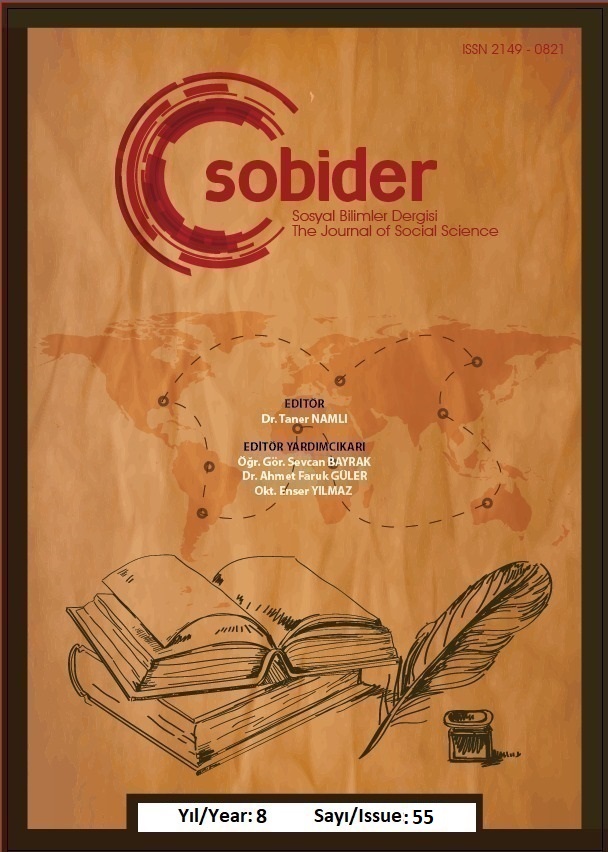Author :
Abstract
Tarihten bugüne bir kültür şehri olma vasfını yaşatan Harput (Elazığ), Anadolu coğrafyasında musiki ve edebiyat geleneğiyle kendine özgü bir yer edinmiştir. Klasik, halk ve tasavvuf musikilerinin beslediği sanat ortamı, güfte ihtiyacını köklü Türk şiirinden ve yörede yetişmiş güçlü şairlerin şiirlerinden karşılamıştır. Şiir; Divan şiiri geleneğinin hemen bütün özelliklerini göstermiş ve Cumhuriyet’in başlangıç yıllarına kadar kendini yaşatabilmiştir. Rahmî-i Harputî ve Hacı Hayri Bey, bu geleneğin en önemli iki ismi olarak öne çıkmaktadır. Cumhuriyet sonrası Elazığ’daki şiir ortamı, Elmas Yıldırım, Fikret Memişoğlu, Niyazi Yıldırım Gençosmanoğlu, Süleyman Bektaş, Cenani Dökmeci ve Şeref Tan gibi isimler etrafında gelişmiştir. Ayrıca sonraki süreçte şehirdeki şiir eğilimlerinin karakteristik özellikleri, bu şahsiyetler tarafından belirginleştirilmiştir.
Keywords
Abstract
Having experienced the quality of being a city of culture since history, Harput (Elazığ) has acquired a unique place in the geography of Anatolia with its music and literature tradition. The artistic environment fostered by classical, folk and sufi music has met the need for song from the well-established Turkish poetry and the poems of the strong poets who grew up in the region. The poem has shown almost all the features of the Divan poetry tradition and was able to survive until the early years of the Republic. Rahmi-i Harputi and Hacı Hayri Bey stand out as the two most important names of this tradition. After the Republic, the poetry environment in Elazığ developed around plays such as Elmas Yıldırım, Fikret Memişoğlu, Niyazi Yıldırım Gençosmanoğlu, Süleyman Bektaş, Cenani Dökmeci and Şeref Tan. In addition, in the subsequent process, the characteristic features of the poetic trends in the city were also marked by these personalities.
Keywords
- Aras, Enver (2007). Hazar’dan Hazar’a Elmas Yıldırım, Elazığ: Manas Yayınları
- Onur, M. Naci (2013). Harputlu DîvânŞâirleri, Elazığ: Manas Yayınları
- Onur, M. Naci (2017). Av. Fikret Memişoğlu Hayatı, Şiirleri ve Hakkında Yazılanlar, Elazığ: Manas Yayınları
- Özcan, Tarık (2014), Şâir ve Şölen Süleyman Bektaş, Elazığ Manas Yayınları
- Özcan Muhammet (2018), Cenani Dökmeci Sanatı, Şiirleri ve Şahsiyeti, İstanbul: Hiperyayın
- Sunguroğlu, İshak (1959). Harput Yollarında, C.2. İstanbul: Elazığ Kültür ve Tanıtma Vakfı Yayınları
- Taşbilek, Şemsettin (2012). Elazığ Müzik Kültürü II, Bursa: Başarı Dergisi Yayınları
- Yılmaz, Arif (2000). Niyazi Yıldırım Gençosmanoğlu Hayatı ve Şiir Sanatı, Ankara: Atatürk Kültür Merkezi Başkanlığı Yayınları





